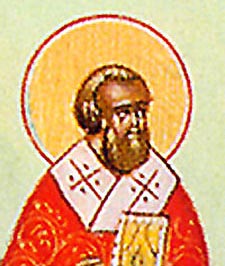The Robber Council
Unfortunately, not everyone was satisfied with the results of the Third Ecumenical Council and the Formulary of Peace. In particular, Saint Cyril’s more extreme followers resented the fact that he had not insisted on one particular phrase concerning Christ: the “one nature of the Word of God Incarnate.” Saint Cyril occasionally had used this phrase, but he had never insisted upon it, perhaps realizing that the term “one nature” could imply that Christ does not have a full human nature. The more extreme Alexandrians, however, feared that by not using it, the Nestorian tendency to overemphasize Christ’s two natures, and especially His humanity—to the point of giving it an independent existence (a personal center of being, or hypostasis)—which would make Jesus two different persons (the Son of God and the Son of Mary), would not be fully rejected.
An uneasy peace was maintained until Saint Cyril’s death in 444. But he was succeeded as bishop of Alexandria by Dioscorus, another fiery Alexandrian, who wished to attain full recognition of the phrase “one nature of the Word of God Incarnate.” His associate, Eutyches, even went so far as to say “Christ’s humanity is different from ours.”

With the support of Emperor Theodosius II, Dioscorus arranged a major council to be held in Ephesus in 449, which affirmed the extreme Alexandrian position that the divinity of Christ virtually eclipsed or even destroyed His humanity. Pope Saint Leo of Rome (r. 440–461) had sent to the council a doctrinal statement, called Leo’s Tome, which strongly affirmed the ongoing reality of the two natures of Christ—one fully divine, and one fully human. But Dioscorus was so much in control of the council that Leo’s Tome was not even allowed to be read there, and bishops suspected of Nestorian tendencies were deposed. When Leo heard later what had happened, he exclaimed that it was a “latrocinium,” a Council of Robbers.
There was widespread resistance to this council, and yet it was the law for the Church and the Empire as long as Emperor Theodosius lived and did not change his mind. Providentially for the Orthodox, in July of the very next year (450), he fell from his horse and died. This brought his distinguished and extremely pious elder sister, Saint Pulcheria, to the throne, along with her distinguished consort, a retired military general who would become Saint Marcian. This Pulcheria had been a champion of the Theotokos during the controversy with Nestorius; it was partly due to her efforts that popular devotion to the Theotokos increased in the first half of the fifth century.
